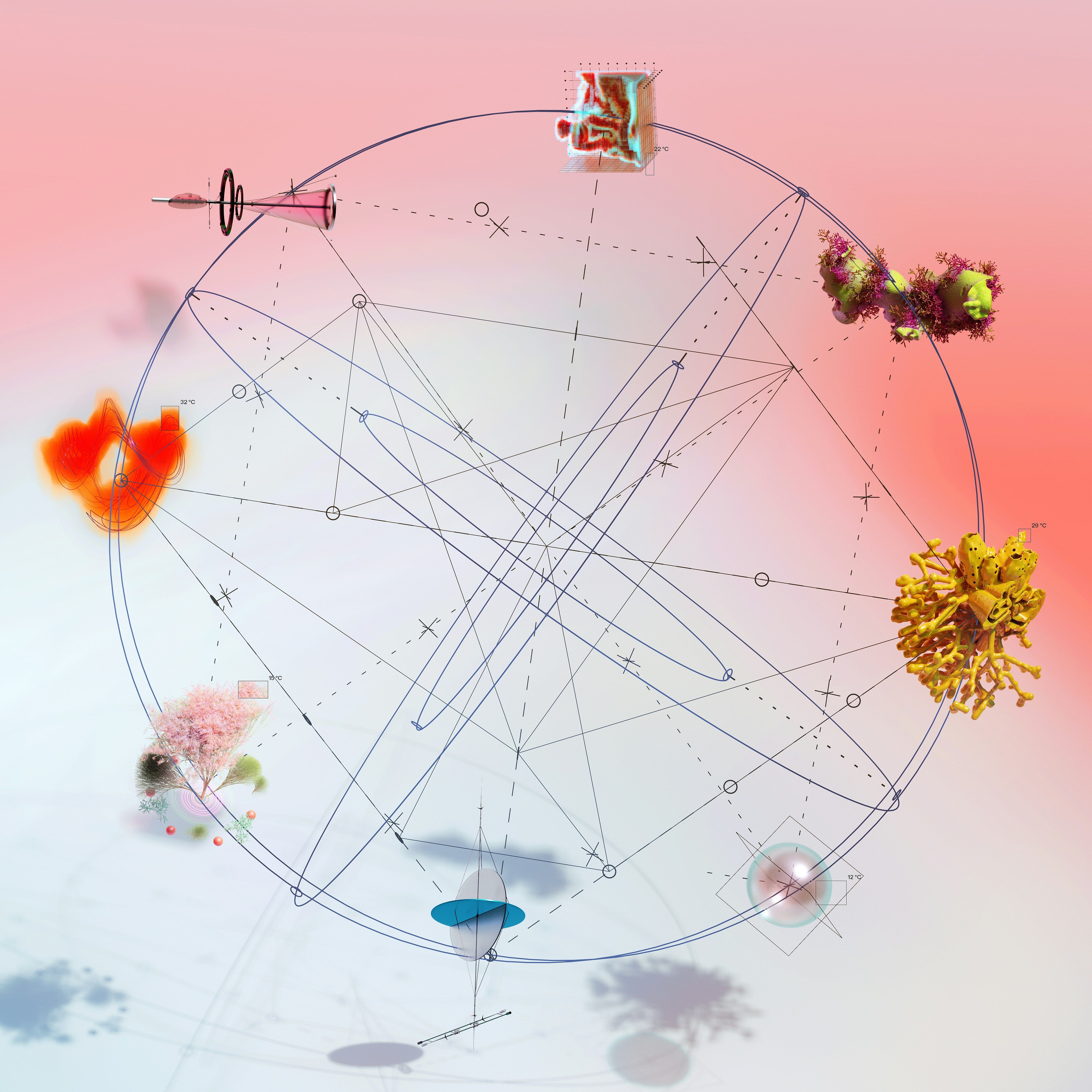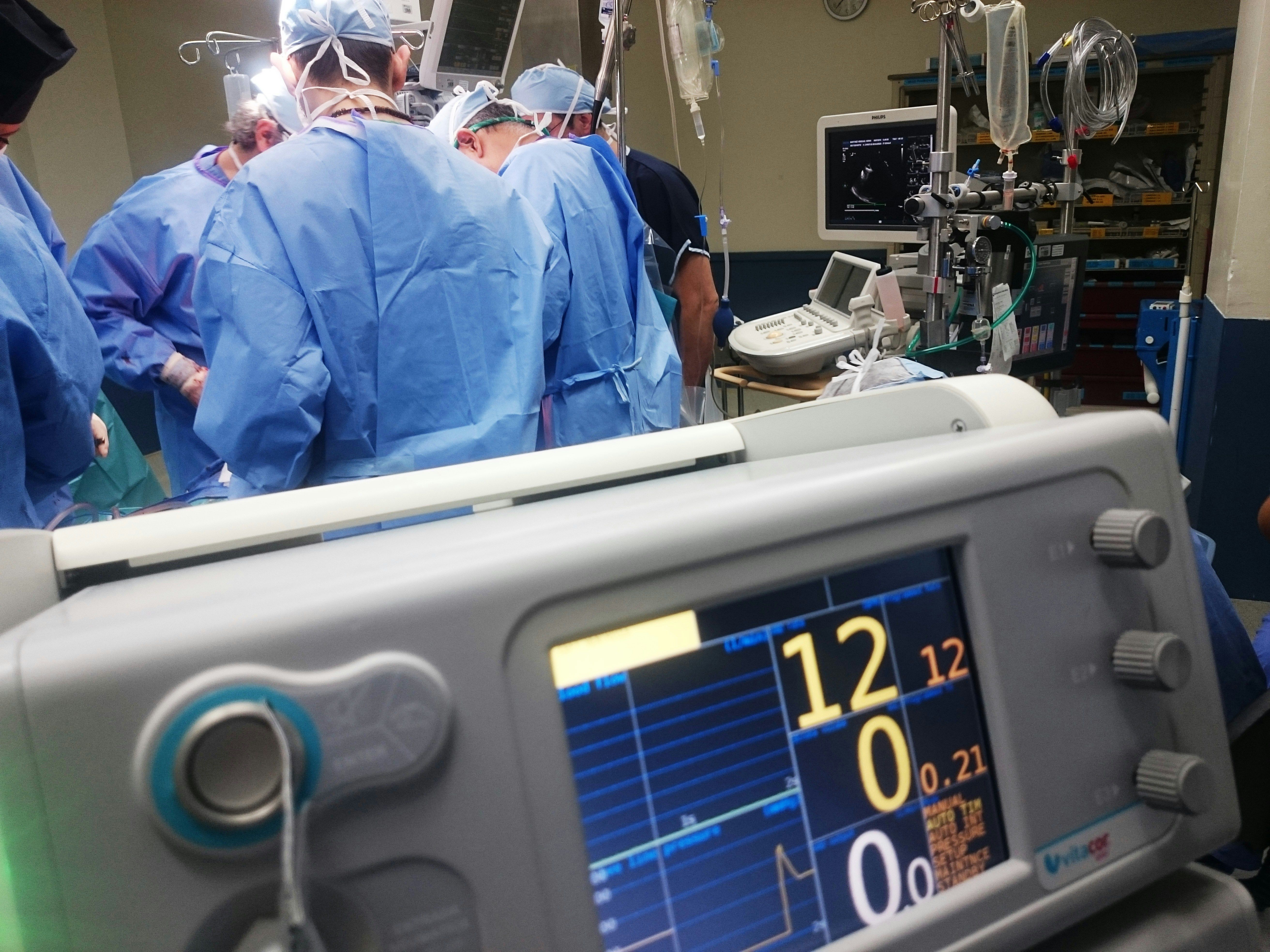
Enterprise operations across healthcare, cybersecurity, and customer service face an unprecedented challenge. Processing thousands of incoming requests daily while maintaining accuracy and response speed. An AI triage system architecture can help address this crisis. This architecture combines ensemble machine learning, real-time drift detection, and graph-based workflow orchestration. This article explores the research foundations and architectural patterns enabling these systems to deliver reliable, scalable automation while preserving essential human oversight for complex decisions.
Understanding the Enterprise Triage Challenge
Hospital emergency rooms receive hundreds of patients daily, while cybersecurity teams monitor millions of potential threats. The fundamental challenge remains consistent across domains and determining what requires immediate attention and what can wait has become overwhelming in the digital age.
Organizations now handle an average of 176 security events per device daily [1], creating massive bottlenecks across industries from healthcare to customer service. Human analysts cannot maintain pace with this volume, leading to delays in critical decisions, missed threats, and exhausted teams.
Traditional approaches relied on simple rules and checklists, but modern challenges demand intelligent systems that can learn, adapt, and make nuanced decisions at scale. Artificial intelligence transforms triage from an overwhelming task into a manageable, automated process.

The Scale Problem
Traditional manual triage breaks down when facing thousands of decisions daily. Each incoming request, alert, or case requires expert judgment about severity, urgency, and appropriate response. Human teams become overwhelmed, critical issues get missed, and response times suffer. AI triage systems solve this by automating the initial classification while escalating complex cases to human experts.
The Solution Architecture
Addressing these challenges requires a comprehensive, layered architecture that orchestrates multiple AI capabilities into a cohesive system. Rather than deploying isolated machine learning models, modern enterprise triage systems integrate five critical components working in concert to deliver reliable, scalable automation.
The architecture follows a clear data flow from initial event capture through intelligent classification, automated workflow execution, and continuous improvement. Each layer builds upon the previous one, creating a resilient pipeline that handles both routine cases and complex edge scenarios requiring human judgment.

At the foundation, Event Ingestion captures requests from multiple channels including email, web forms, APIs, chat interfaces, and monitoring systems. This multi-channel capability ensures the system handles all enterprise communication pathways through a unified pipeline.
The Event Processing layer normalizes diverse input formats into a consistent structure, eliminates duplicates, and applies initial priority assignments. This preprocessing ensures downstream components receive clean, standardized data regardless of the original source.
The AI Triage Engine represents the intelligence core, employing ensemble machine learning models that combine multiple algorithms for superior accuracy. Confidence scoring quantifies prediction certainty, while drift detection monitors for data distribution changes that signal when models need retraining. Ensemble learning combines several individual models to obtain better generalization performance, with deep ensemble models showing superior performance compared to shallow or traditional models [10].
Workflow Orchestration translates classifications into actions through graph-based execution frameworks. Simple cases trigger automated responses, complex scenarios invoke specialized tools, and low-confidence predictions escalate to human experts. Graph-based frameworks define workflows based on graph structures, supporting complex loops and conditional branches with fine-grained agent control [8].
Finally, Continuous Learning closes the loop by capturing human feedback, monitoring performance metrics, and triggering automatic model retraining when quality degrades. Continual learning enables models to continuously learn on new data by accumulating knowledge without forgetting what was learned in the past [13]. This feedback mechanism ensures the system adapts to evolving patterns without manual intervention.
The following sections examine each architectural layer in detail, exploring the research foundations, implementation patterns, and production considerations that enable these systems to operate reliably at enterprise scale.
Event Processing and Data Ingestion
Before classification can occur, enterprise systems must efficiently capture, normalize, and queue incoming events from diverse sources. Event processing forms the critical foundation that ensures data flows reliably into the triage pipeline, handling message routing, deduplication, and priority queuing based on initial content analysis.
Modern architectures employ distributed event streaming platforms that can process millions of events per second, ensuring no data loss during peak loads. These platforms provide reliable message queuing with guaranteed delivery, enabling downstream components to consume events at their own pace without overwhelming system resources.
Multi-channel ingestion handles events from email, web forms, APIs, chat interfaces, and monitoring systems. Normalization transforms diverse input formats into a consistent schema for processing. Deduplication identifies and merges redundant events to prevent duplicate work. Initial filtering routes obvious cases immediately while queuing complex items for deeper analysis.
Machine Learning Classification Architecture
At the core of every AI triage system lies a classification engine that has learned from thousands of past decisions. When a new request arrives, whether a security alert, patient symptom report, or customer complaint, the system analyzes it instantly and assigns it to the appropriate category and priority level.
Pattern Recognition Through Training
Machine learning models study historical data to identify patterns. A cybersecurity triage system learns that alerts containing certain keywords combined with specific network behaviors typically indicate genuine threats versus false alarms. Over time, the system refines these pattern-matching abilities, becoming more accurate with experience.

Ensemble Methods for Superior Accuracy
Instead of relying on a single algorithm, the most effective systems use multiple AI models working together through ensemble learning. Multiple specialists consulting before making a diagnosis yield better decisions than any individual expert, as each algorithm approaches the problem from a different angle.
Ensemble learning combines several individual models to obtain better generalization performance, with deep ensemble models showing superior performance compared to shallow or traditional models [10]. In practical terms, one algorithm might excel at detecting urgent keywords, another at understanding context, and a third at recognizing unusual patterns.
Gradient boosting classifiers have demonstrated exceptional real-world performance, reducing alerts shown to analysts by 61% over six months with a remarkably low false negative rate of only 1.36% over millions of alerts [1]. This translates to the system catching most critical issues while eliminating nearly two-thirds of unnecessary work.
Rather than relying on one algorithm, ensemble methods combine multiple AI models, each trained slightly differently. When they agree on a classification, confidence is high. When they disagree, the system can flag the item for human review or use weighted voting based on each model's historical accuracy.
Domain-Specific Applications
The versatility of AI triage systems manifests through diverse applications across industries, each adapting core techniques to domain-specific challenges.

Healthcare Applications
Medical applications achieve high accuracy in patient severity classification using nationwide datasets [2]. These systems analyze vital signs, symptoms, and medical history to determine whether a patient needs immediate emergency care, can wait for standard treatment, or requires specialized routing to particular departments.
Advanced implementations use graph neural networks that analyze patient similarity networks to predict emergency department outcomes [3]. This technique leverages the wisdom contained in historical patient data to inform current decisions by identifying which previous patients most closely match each new case. Emergency department triage prediction models using large public electronic health records have been benchmarked to establish performance standards [4].
Cybersecurity Operations face endless streams of potential threats. AI triage systems classify alerts by severity, automatically close obvious false positives, and prioritize genuine threats requiring immediate investigation. Analysts can focus their expertise where it matters most rather than drowning in noise.
Customer Service organizations route support tickets automatically to appropriate teams based on content, urgency indicators, and customer history. Simple issues trigger automated responses, while complex problems reach specialized agents immediately.
Drift Detection and Model Monitoring
The world changes continuously, and yesterday's patterns do not always predict tomorrow's problems. A phenomenon called drift occurs when the data feeding an AI system gradually shifts from what it was trained on. New types of cyber attacks emerge, disease symptoms evolve, customer behaviors change, and suddenly an accurate model starts making mistakes.
Understanding Concept Drift
A model trained to detect phishing emails in 2023 faces different challenges in 2025. New phishing techniques emerge, legitimate email patterns shift, and model accuracy quietly degrades. Without drift detection, degradation goes unnoticed until serious damage occurs. This silent deterioration threatens the reliability of all production AI systems.

Detection of drift is essential for maintaining ML model performance, yet actual labels are difficult and expensive to obtain, necessitating methods that detect likely degradation without labels [5]. Modern drift detection does not wait for confirmed mistakes. Instead, it monitors the model's confidence levels and data characteristics, spotting changes before they cause problems.
Statistical methods test the distribution of model prediction confidence for changes, sidestepping domain-specific feature representation and generalizing across different problem types [6]. This approach functions as an early warning system for AI models, alerting teams to potential issues before they materialize.
Novel drift detection techniques show 57.1% improvement in precision while using 99% fewer labels compared to traditional methods [7]. Organizations can monitor model health continuously without the massive expense of manually labeling thousands of examples to check accuracy.
Graph-Based Workflow Orchestration
Classification represents just the beginning. Modern triage systems execute appropriate workflows automatically based on classification results. Rather than rigid, pre-programmed decision trees, graph-based orchestration frameworks enable flexible workflows that adapt to context.

Orchestration Intelligence
Graph-based frameworks define workflows based on graph structures, supporting complex loops and conditional branches with fine-grained agent control [8]. Systems can handle multi-step processes, make decisions at each stage, and coordinate multiple AI agents working on different aspects of a problem simultaneously.
Multi-Step Process Execution
A customer complaint about a billing error demonstrates multi-stage workflow execution. The triage system classifies the request as a billing issue with high confidence, checks if it matches a common problem with a standard solution, routes simple cases to automated resolution, escalates complex cases to billing specialists, and monitors resolution to learn from the outcome.
Research demonstrates that graph-based orchestration manages agent interactions efficiently, ensuring user inputs are analyzed, routed, and processed with enhanced accuracy and scalability [9]. Each step can involve different AI models or tools, coordinated seamlessly by the orchestration layer.
Graph-based workflows naturally represent complex business logic with conditional branching, parallel execution, and iterative refinement loops. This flexibility allows systems to adapt to new processes without complete reprogramming.
Continuous Learning Mechanisms
The most sophisticated triage systems incorporate every interaction into their learning process. When a human analyst overrides an automated decision or corrects a classification, the system captures this feedback and incorporates it into future decision-making.
Human Feedback Integration
Every analyst correction becomes a training example. When an expert reclassifies an incident, changes a priority level, or adds context, this information flows back into the training pipeline. The system gradually learns organizational preferences, emerging threat patterns, and evolving business processes without requiring explicit reprogramming.

However, this creates an interesting challenge. Hidden feedback loops can cause concept drift as the system influences its environment, with the state of the environment becoming causally dependent on the learner itself over time [11][12]. The AI's decisions change user behavior, which changes future data, which affects the AI's learning. This circular dynamic requires careful monitoring and management.
Continual learning enables models to continuously learn on new data by accumulating knowledge without forgetting what was learned in the past [13]. The challenge involves maintaining a delicate balance between adapting to new patterns while preserving valuable lessons from past experience.
Advanced frameworks incorporate interaction-aware direct preference optimization to align model behavior with human intent, learning from noisy feedback in real-time while distinguishing reliable corrections from inconsistent input [14]. Not all human feedback carries equal value, so systems must intelligently weight and validate corrections.
Operational Impact and Results
Enterprise AI triage systems represent a fundamental shift in how organizations handle high-volume decision-making. Evidence demonstrates dramatic reductions in analyst workload, improved response times, higher accuracy rates, and better resource allocation.
Key success factors consistently emerge from research and deployment studies. Robust monitoring through continuous drift detection and performance tracking ensures systems maintain accuracy over time, with degradation caught early before it impacts operations. Transparent decision-making through interpretable models and clear explanations builds trust between AI systems and human operators, particularly critical in sensitive domains.
Flexible architecture via graph-based workflow orchestration and modular design allows systems to adapt to changing business needs without complete overhauls. Continuous adaptation through feedback loops and learning mechanisms keeps systems current as environments evolve, incorporating organizational knowledge and emerging patterns.
As AI capabilities advance, triage systems will handle increasingly complex scenarios with greater autonomy. The goal involves augmenting rather than replacing human judgment, automating routine decisions while elevating human expertise to focus on truly challenging cases requiring creativity, empathy, and nuanced understanding.
Organizations implementing these systems report transformative operational improvements. Security teams catch more threats with smaller teams. Healthcare facilities process more patients safely. Customer service organizations resolve issues faster while improving satisfaction. The technology has matured from promising research to production-ready solutions delivering measurable value.
The convergence of event processing, ensemble learning, drift detection, workflow orchestration, and continual learning creates systems that adapt, learn, and improve continuously in partnership with human operators. This synthesis of techniques produces not merely automated systems, but genuinely intelligent platforms capable of evolving with organizational needs.
References
- Turcotte, M. et al., "Automated Alert Classification and Triage (AACT): An Intelligent System for the Prioritisation of Cybersecurity Alerts," arXiv, 2025, [Online]
- Park, M.S. et al., "Machine Learning-Based COVID-19 Patients Triage Algorithm using Patient-Generated Health Data from Nationwide Multicenter Database," arXiv, 2021, [Online]
- Authors, "Leveraging graph neural networks for supporting Automatic Triage of Patients," arXiv, 2024, [Online]
- Xie, F. et al., "Benchmarking emergency department triage prediction models with machine learning and large public electronic health records," arXiv, 2022, [Online]
- Ackerman, S. et al., "Machine Learning Model Drift Detection Via Weak Data Slices," arXiv, 2021, [Online]
- Ackerman, S. et al., "Detection of data drift and outliers affecting machine learning model performance over time," arXiv, 2022, [Online]
- Pham, T.M.T. et al., "Time to Retrain? Detecting Concept Drifts in Machine Learning Systems," arXiv, 2025, [Online]
- Wang, J. et al., "Intelligent Spark Agents: A Modular LangGraph Framework for Scalable, Visualized, and Enhanced Big Data Machine Learning Workflows," arXiv, 2024, [Online]
- Wang, J. et al., "Agent AI with LangGraph: A Modular Framework for Enhancing Machine Translation Using Large Language Models," arXiv, 2024, [Online]
- Ganaie, M.A. et al., "Ensemble deep learning: A review," arXiv, 2022, [Online]
- Khritankov, A. et al., "Analysis of hidden feedback loops in continuous machine learning systems," arXiv, 2021, [Online]
- Veprikov, A. et al., "A Mathematical Model of the Hidden Feedback Loop Effect in Machine Learning Systems," arXiv, 2024, [Online]
- Authors, "Continual Learning: Applications and the Road Forward," arXiv, 2024, [Online]
- Authors, "Reinforced Interactive Continual Learning via Real-time Noisy Human Feedback," arXiv, 2025, [Online]
Stability Through Continuous Adaptation
A new systems paradigm where learning, adaptation, and governance become core infrastructure rather than bolt-on features
The Path to Practical Confidential Computing for AI Systems
Discover how the convergence of trusted execution environments, homomorphic encryption, and federated learning is creating production-ready systems that protect AI models and sensitive data with minimal performance overhead.
Discuss This with Our AI Experts
Have questions about implementing these insights? Schedule a consultation to explore how this applies to your business.